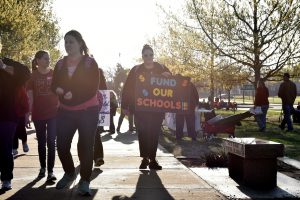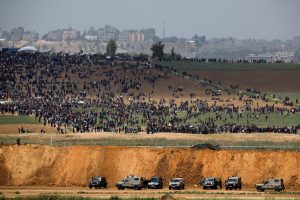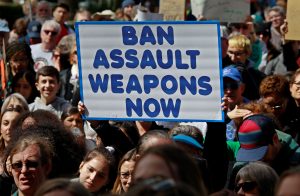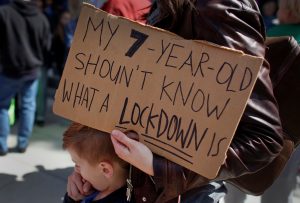
By Nidal al-Mughrabi
GAZA (Reuters) – Israeli fire killed a Palestinian at the Gaza border on Thursday and another died of wounds suffered several days ago, health officials said, bringing the number of Palestinian dead in a week of frontier protests and violence to 19.
The Israeli military said one of its aircraft targeted an armed militant near the security fence along the Gaza Strip.
Tens of thousands of Palestinians began a six-week-long protest last Friday in tent encampments along the fenced border of the Israeli-blockaded Gaza Strip, an enclave of two million ruled by the militant Hamas Islamist group.
The demonstrators are pressing for a right of return for refugees and their descendants to what is now Israel.
The latest deaths are likely to add to international concerns over the violence, which human rights groups have said involved live fire against unarmed demonstrators posing no immediate threat to life. Israel says it is doing what is necessary to defend its border and prevent it from being breached.
Sixteen Palestinians died after being shot by Israeli troops on the first day of the protest, Palestinian medical officials said, and another was killed on Tuesday.
A 33-year-old man, hit by Israeli fire a few days ago near one of the tent cities, died on Thursday, the health officials said.
The military said that during the protests its troops had used live fire only against people trying to sabotage the border fence or rolling burning tyres and throwing rocks.
Some of the dead were identified by Palestinian militant groups as members.
LETHAL FORCE
U.N. Secretary-General Antonio Guterres has called for an independent investigation into Friday’s deaths and appealed to those involved to refrain from any act that could lead to further casualties or place civilians in harm’s way.
U.N. deputy political affairs chief Taye-Brook Zerihoun, commenting on the violence, has said lethal force should only be used as a last resort.
Israel’s defence minister, Avigdor Lieberman, described most of those killed as “terrorists …active in the armed wing of Hamas and Islamic Jihad”. The two groups advocate the destruction of Israel, which along with the West, regards them as terrorist organizations.
Many of the demonstrators who turned out for the start of the protest campaign returned to their homes and jobs over the week. But organizers expect large crowds again on Friday, the Muslim sabbath.
Hamas announced on Thursday it would pay $3,000 to the family of anyone killed in the protests, $500 to Palestinians critically wounded and $200 to those who sustain more minor injuries.
Israeli leaders have said payments by Palestinian authorities to the families of militants killed or imprisoned by Israel encourages attacks on Israelis. Palestinians revere brethren killed in the conflict with Israel as martyrs.
Visiting the frontier this week, Lieberman warned protesters “against continuing the provocation and said that “every person who comes close to the fence is endangering their lives”.
Protesters have been stocking up on tyres and say they intend to burn thousands of them at the border and also use mirrors and lasers to distract Israeli sharpshooters across the frontier on Friday.
Speaking on Army Radio, Israeli Public Security Minister Gilad Erdan said: “We are prepared for every scenario, even an attempt to cause sharpshooters to lose focus.”
The protest action is set to wind up on May 15, when Palestinians mark the “Naqba”, or “Catastrophe”, when hundreds of thousands fled or were driven out of their homes during violence that culminated in war in May 1948 between the newly created state of Israel and its Arab neighbors.
Israel has long ruled out any right of return, fearing it would lose its Jewish majority.
Israel-Palestinian peace talks have been frozen since 2014.
The Palestinians are furious at U.S. President Donald Trump’s Dec. 6 decision to recognize Jerusalem as Israel’s capital, and to move the U.S. Embassy to the city. Its eastern half was taken by Israel in a 1967 war and is wanted by Palestinians for the capital of a future state.
(Writing by Jeffrey Heller, Editing by William Maclean)













